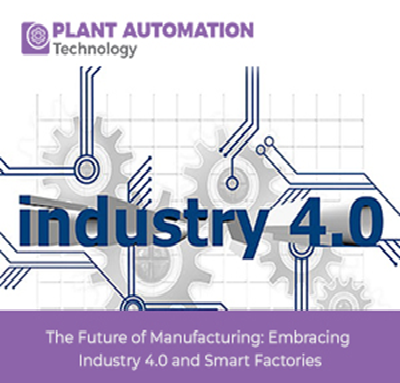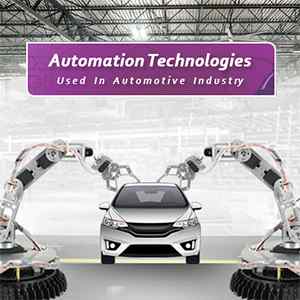The Future of Manufacturing: Embracing Industry 4.0 and Smart Factories

Introduction
The manufacturing industry is in the midst of a revolutionary change, driven by the integration of advanced technologies and digitalization. This shift is commonly known as Industry 4.0, encompassing the adoption of smart factories, automation, data analytics, and the Internet of Things (IoT) to optimize manufacturing processes and boost efficiency. In this article, we will delve into the core components of Industry 4.0 and how smart factories are shaping the future of manufacturing.
Industry 4.0: A Brief Overview
Industry 4.0, often termed the Fourth Industrial Revolution, is a progression that builds upon the foundations established by its predecessors characterized by mechanization, mass production, and automation. What sets Industry 4.0 apart is its hallmark feature: the effortless incorporation of digital technologies into every facet of the manufacturing landscape. Key constituents of Industry 4.0 encompass:
1. IoT and Connectivity: The proliferation of sensors and devices allows machines and equipment to communicate with each other in real time. This connectivity enables data collection and analysis to drive decision-making.
2. Advanced Data Analytics: Utilizing cutting-edge analytical tools, the extensive data produced by interconnected devices undergoes thorough analysis. This empowers manufacturers to glean valuable insights into their operations, ultimately resulting in enhanced efficiency and product quality.
3. Automation and Robotics: Robots are increasingly used in manufacturing for tasks ranging from repetitive assembly to complex quality control. This not only reduces labor costs but also enhances precision and consistency.
4. Additive Manufacturing (3D Printing): The advent of 3D printing is reshaping the landscape of product design and manufacturing. It enables swift prototyping, personalized production, and the fabrication of intricate geometries that were formerly unattainable or prohibitively expensive.
5. Artificial Intelligence (AI): AI algorithms can predict maintenance needs, optimize production schedules, and even enhance product design. Machine learning and AI-driven systems are becoming integral to manufacturing operations.
6. Cyber-Physical Systems (CPS): These systems blur the lines between the physical and digital worlds. CPS combines sensors, software, and machinery to create autonomous and self-regulating manufacturing processes.
The Rise of Smart Factories
Smart factories are a hallmark of Industry 4.0. These are manufacturing facilities that leverage advanced technologies to create more agile, efficient, and responsive operations. Here are some key features of smart factories:
1. Real-Time Monitoring: Sensors placed throughout the factory collect data on equipment performance, product quality, and resource usage. This data is transmitted in real-time, enabling immediate response to issues.
2. Predictive Maintenance: Machine learning algorithms analyze equipment data to predict when maintenance is needed. This proactive approach reduces downtime and prevents costly breakdowns.
3. Digital Twinning: Smart factories often create digital replicas (digital twins) of their physical operations. These virtual models allow for simulations, testing, and optimization without disrupting the actual production process.
4. Customization and Flexibility: With automation and digital control, smart factories can quickly adapt to changing customer demands. They excel in producing customized products efficiently, even in small batches.
5. Supply Chain Integration: Smart factories are integrated into broader supply chain systems. They can adjust production schedules in response to changes in demand, inventory levels, or external disruptions.
Benefits of Embracing Industry 4.0 and Smart Factories
1. Enhanced Efficiency: Smart factories curtail waste, optimize resource deployment, and elevate production efficiency. These enhancements result in reduced production costs and expanded profit margins.
2. Improved Product Quality: Through real-time monitoring and data analytics, manufacturers can swiftly identify and address quality concerns at the outset of the manufacturing process, guaranteeing that products either meet or surpass established quality benchmarks.
3. Reduced Downtime: Predictive maintenance and remote monitoring prevent unexpected breakdowns, minimizing downtime and improving overall equipment effectiveness.
4. Increased Customization: Smart factories can efficiently produce customized products, catering to individual customer preferences and niche markets.
5. Sustainability: By optimizing resource use and reducing waste, smart factories contribute to environmental sustainability.
Challenges and Considerations
While the benefits of Industry 4.0 and smart factories are compelling, manufacturers also face challenges:
1. Cybersecurity: Increased connectivity introduces cybersecurity risks. Manufacturers must invest in robust security measures to protect sensitive data and operations.
2. Workforce Transition: Automation and digitalization may lead to workforce displacement. Companies should invest in retraining and upskilling programs for employees.
3. Data Privacy: Collecting vast amounts of data requires careful consideration of data privacy regulations and ethical concerns.
Scaling Up and Scaling Down with Ease
One of the remarkable advantages of Industry 4.0 and smart factories is the ability to scale production up or down quickly. This agility is essential in responding to market fluctuations, seasonal demand variations, or unforeseen disruptions like the COVID-19 pandemic. Traditional manufacturing setups often struggle to adjust their operations rapidly. In contrast, smart factories can adapt production schedules and resource allocation swiftly, minimizing financial losses and maximizing efficiency.
Supply Chain Integration and Resilience
In the age of smart manufacturing, supply chains are no longer siloed but instead form interconnected networks. This integration enables real-time tracking of raw materials, work-in-progress, and finished goods. Manufacturers gain the ability to monitor the entire production and distribution process, ensuring timely deliveries, reducing bottlenecks, and enhancing overall supply chain resilience. Smart factories can automatically reorder materials when inventory levels are low, optimizing just-in-time inventory management.
Energy Efficiency and Sustainability
Industry 4.0 technologies also contribute significantly to sustainability efforts. Smart factories utilize energy-efficient machinery and algorithms that optimize energy consumption. By minimizing waste and resource use, they reduce the carbon footprint of manufacturing operations. Additionally, the ability to track and trace materials and products throughout the supply chain aids in sustainability reporting, helping companies meet environmental goals and comply with regulations.
Global Collaboration and Remote Operations
Digitalization and connectivity have transformed the manufacturing landscape. Companies can collaborate with partners, suppliers, and customers worldwide seamlessly. Remote monitoring and operations are increasingly feasible, reducing the need for physical presence on factory floors. This has proven invaluable during times of travel restrictions and health crises, as experts from different parts of the world can troubleshoot issues and optimize processes remotely.
Challenges on the Horizon
While the future of manufacturing is undoubtedly exciting, several challenges must be addressed:
1. Cost of Implementation: The initial investment required for Industry 4.0 technologies can be substantial. Smaller manufacturers may face barriers to adoption.
2. Data Security: The vast amount of data generated and shared in smart factories raises concerns about data security and privacy. Companies must prioritize cybersecurity measures.
3. Workforce Skills: The workforce needs to acquire new skills to operate and maintain smart factory equipment. Upskilling and continuous education are essential.
4. Interoperability Challenges: The integration of diverse digital systems and devices can be intricate, particularly when dealing with older legacy equipment.
Conclusion
The future of manufacturing lies in the adoption of Industry 4.0 principles and the implementation of smart factories. As technology continues to advance, manufacturers who embrace these innovations will stay competitive, increase efficiency, and drive the industry forward into a new era of manufacturing excellence. While challenges exist, the benefits of this transformation are too significant to ignore, making it a compelling journey for businesses worldwide.







